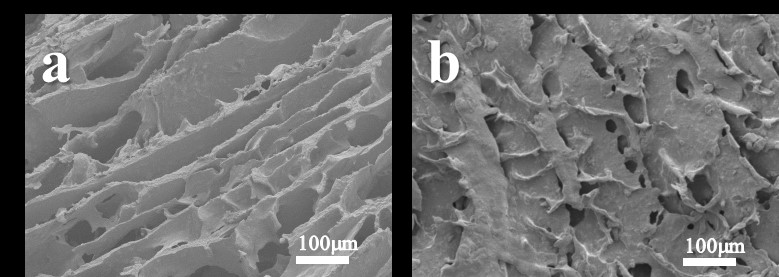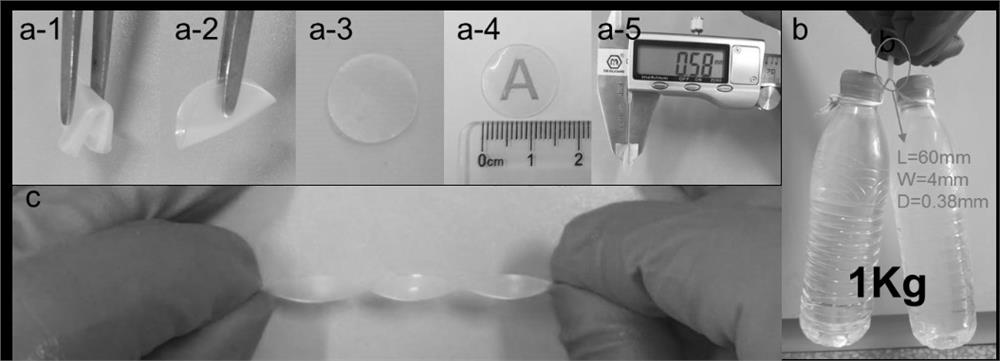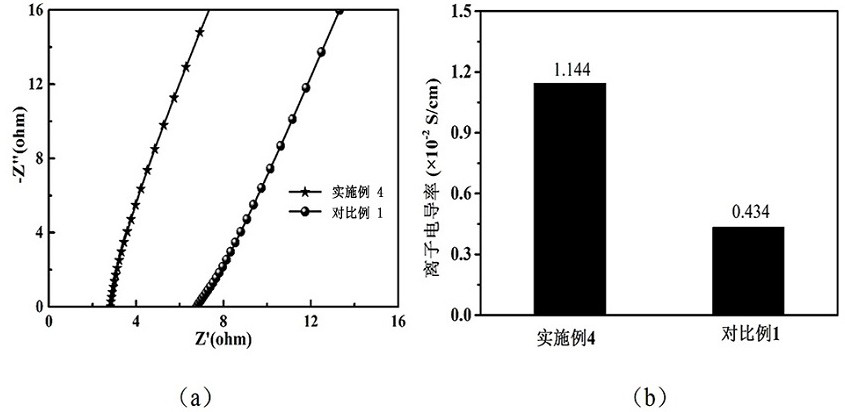Gel electrolyte of zinc-based battery and preparation and application thereof
A gel electrolyte and zinc-based battery technology, applied in the field of electrochemical energy storage, can solve the problems of low mechanical strength, complex preparation process, and few types of flexible zinc-based gel electrolytes, and achieve high mechanical strength, simple preparation process, low cost effect
- Summary
- Abstract
- Description
- Claims
- Application Information
AI Technical Summary
Problems solved by technology
Method used
Image
Examples
Embodiment 1
[0032] Under the condition of 25°C, 10 g of sodium alginate was completely dissolved in 100 mL of deionized water. Then add 5ml tetraethyl silicate and 5ml glycerol in sequence, add hydrochloric acid solution dropwise, adjust the pH to 6, react at 80°C for 0.5h to obtain a uniform mixture, and inject polytetrafluoroethylene with a thickness of 2mm In the mold, stand at room temperature for 2 hours to obtain alginic acid-polysilicate hydrogel, which is ready for use. Dissolve 5g of zinc sulfate and 2g of lithium chloride in 50mL of deionized water to obtain an aqueous electrolyte solution for use. Under the condition of 30° C., the alginic acid-polysilicate hydrogel after standing was immersed in the water electrolyte solution prepared above for 0.2 h, and finally a gel electrolyte was obtained.
Embodiment 2
[0034] Under the condition of 45°C, 5 g of sodium alginate was completely dissolved in 100 mL of deionized water. Then add 5ml tetraethyl silicate and 5ml glycerol in sequence, add hydrochloric acid solution dropwise, adjust the pH to 3, react at 80°C for 1h to obtain a uniform mixture, inject it into a polytetrafluoroethylene mold with a thickness of 2mm , standing at room temperature for 6 hours to obtain alginic acid-polysilicic acid hydrogel, ready to use. Dissolve 10g of zinc sulfate and 2g of lithium chloride in 50mL of deionized water to obtain an aqueous electrolyte solution for use. Under the condition of 45° C., the alginic acid-polysilicate hydrogel after standing was immersed in the above-prepared water electrolyte for 0.5 h to finally obtain a gel electrolyte.
Embodiment 3
[0036] Under the condition of 65°C, 2 g of sodium alginate was completely dissolved in 100 mL of deionized water. Then add 15ml of tetraethyl silicate and 10ml of glycerol in sequence, add hydrochloric acid solution dropwise, adjust the pH to 4, react at 60°C for 1h to obtain a uniform mixture, and inject it into a polytetrafluoroethylene mold with a thickness of 2mm , standing at room temperature for 12 hours to obtain alginic acid-polysilicate hydrogel, which is ready for use. Dissolve 10g of zinc sulfate and 4g of lithium sulfate in 50mL of deionized water to obtain an aqueous electrolyte solution for use. Under the condition of 50° C., the alginic acid-polysilicate hydrogel after standing was immersed in the above-prepared water electrolyte for 1 hour to finally obtain a gel electrolyte.
PUM
| Property | Measurement | Unit |
|---|---|---|
| Stress | aaaaa | aaaaa |
| Stress | aaaaa | aaaaa |
Abstract
Description
Claims
Application Information
 Login to View More
Login to View More - R&D
- Intellectual Property
- Life Sciences
- Materials
- Tech Scout
- Unparalleled Data Quality
- Higher Quality Content
- 60% Fewer Hallucinations
Browse by: Latest US Patents, China's latest patents, Technical Efficacy Thesaurus, Application Domain, Technology Topic, Popular Technical Reports.
© 2025 PatSnap. All rights reserved.Legal|Privacy policy|Modern Slavery Act Transparency Statement|Sitemap|About US| Contact US: help@patsnap.com



